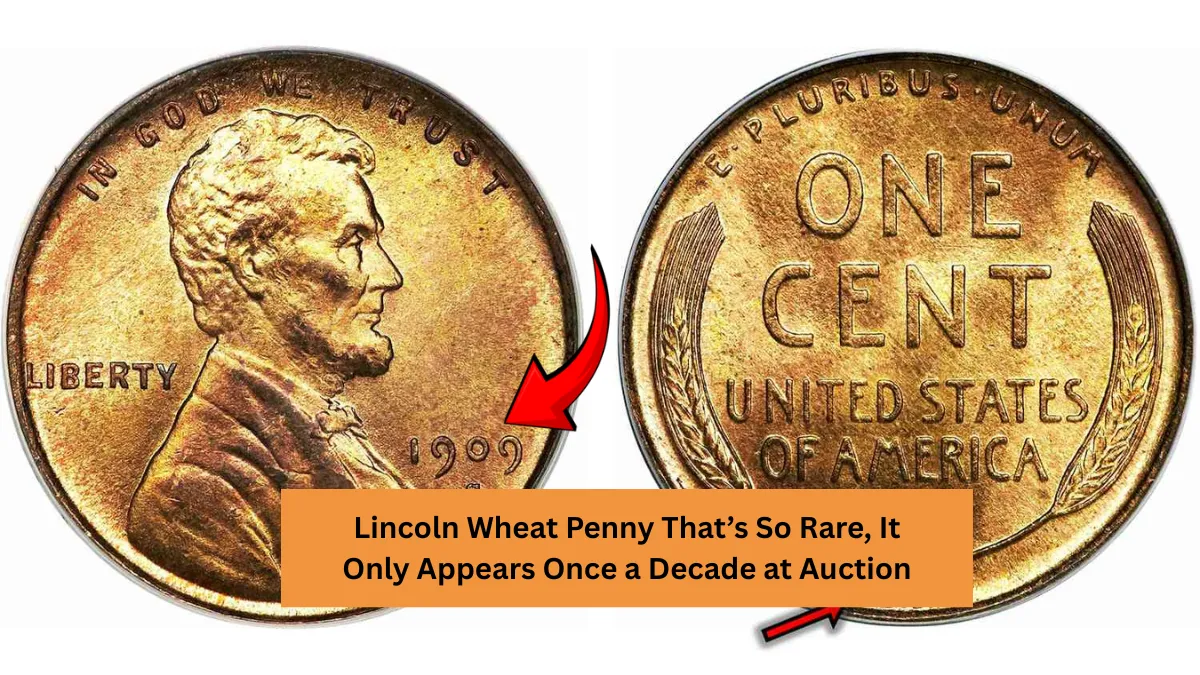Lincoln Wheat Penny So Rare, It Only Shows Up at Auction Once Every Ten Years
In the world of coin collecting, some coins are so rare and special that they almost feel like legends. One such coin is a particular Lincoln Wheat penny that’s so uncommon, it only appears at auction about once every decade — making it one of the most sought-after and valuable pennies for collectors.
What Makes This Lincoln Wheat Penny So Unique?
The Lincoln Wheat penny was first minted in 1909 and continued until 1958, known for the iconic wheat stalks on the back side. Over millions of these pennies were made, so most people think they are common. But a few special editions, varieties, or rare years stand apart due to mistakes in minting, low production numbers, or historical significance.
The penny that appears once every ten years at auction is usually one with a rare date, unique minting error, or exceptional condition — things that make it extremely hard to find.
Examples of Ultra-Rare Lincoln Wheat Pennies
- 1909-S VDB: One of the most famous rare pennies, minted in San Francisco with the initials of designer Victor David Brenner (VDB). It’s prized because of its low mintage.
- 1914-D: Another key rare date from the Denver Mint, known for being hard to find in good condition.
- 1955 Double Die: This penny features a striking doubling of the date and lettering, one of the most famous mint errors in U.S. coin history.
Any of these pennies, especially if in near-perfect shape, can take years to show up at major auctions — sometimes only once every decade or so.
Why Does It Take So Long for These Pennies to Resurface?
- Scarcity: Some of these pennies had extremely low production numbers.
- Collector Hold: Many rare pennies are already owned by private collectors or museums who rarely sell.
- Condition: Finding a rare penny in top mint condition is even rarer, as most coins from everyday use are worn.
Because of these reasons, auctions featuring such coins are rare events, and when one does appear, it creates a buzz in the collecting community.
How Much Are They Worth?
The value varies depending on the exact coin, condition, and auction demand. Prices can range from tens of thousands to over a million dollars for the rarest specimens. For example:
- The 1909-S VDB can fetch between $20,000 to $100,000+ in excellent condition.
- The 1955 Double Die has sold for over $100,000 at auction.
What Should You Do If You Think You Have One?
- Don’t Clean It: Cleaning can damage the coin and reduce its value.
- Get Professional Grading: Services like PCGS or NGC can authenticate and grade your coin, increasing trust for buyers.
- Consult Experts: Talk to experienced coin dealers or numismatists to understand the coin’s rarity and value.
The Thrill of the Hunt
The fact that these Lincoln Wheat pennies show up only once a decade at auctions adds to their mystique and allure. For collectors, hunting for such rare coins is not just about the money — it’s about preserving history and owning a piece of American heritage.

